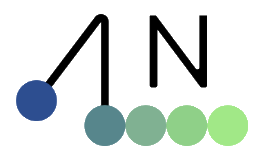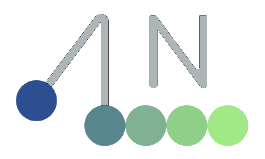newton.sensors.RaycastSensor#
- class newton.sensors.RaycastSensor(model, camera_position, camera_direction, camera_up, fov_radians, width, height, max_distance=1000.0)[source]#
Bases:
objectRaycast-based depth sensor for generating depth images.
The RaycastSensor simulates a depth camera by casting rays from a virtual camera through each pixel in an image. For each pixel, it finds the closest intersection with the scene geometry and records the distance as a depth value.
The sensor supports perspective cameras with configurable field of view, aspect ratio, and resolution. The resulting depth image has the same resolution as specified, with depth values representing the distance from the camera to the closest surface along each ray.
Camera Coordinate System
The camera uses a right-handed coordinate system where: - The forward direction (camera_direction) is the direction the camera is looking - The up direction (camera_up) defines the camera’s vertical orientation - The right direction (camera_right) is computed as the cross product of forward and up
Depth Values
Positive depth values: Distance to the closest surface
Negative depth values (-1.0): No intersection found (ray missed all geometry)
- device#
The device (CPU/GPU) where computations are performed
- camera_position#
3D position of the camera in world space
- camera_direction#
Forward direction vector (normalized)
- camera_up#
Up direction vector (normalized)
- camera_right#
Right direction vector (normalized)
- fov_radians#
Vertical field of view in radians
- aspect_ratio#
Width/height aspect ratio
- width#
Image width in pixels
- height#
Image height in pixels
- depth_image#
2D depth image array (height, width)
- __init__(model, camera_position, camera_direction, camera_up, fov_radians, width, height, max_distance=1000.0)#
Initialize a RaycastSensor.
- Parameters:
model (Model) – The Newton model containing the geometry to raycast against
camera_position (tuple[float, float, float] | ndarray) – 3D position of the camera in world space
camera_direction (tuple[float, float, float] | ndarray) – Forward direction of the camera (will be normalized)
camera_up (tuple[float, float, float] | ndarray) – Up direction of the camera (will be normalized)
fov_radians (float) – Vertical field of view in radians
width (int) – Image width in pixels
height (int) – Image height in pixels
max_distance (float) – Maximum ray distance; rays beyond this return no hit
- eval(state, include_particles=False, particle_march_step=None)#
Evaluate the raycast sensor to generate a depth image.
Casts rays from the camera through each pixel and records the distance to the closest intersection with the scene geometry. When
include_particlesis enabled (not enabled by default), particles stored in the simulation state are also considered.- Parameters:
state (State) – The current state of the simulation containing body poses
include_particles (bool) – Whether to test ray intersections against particles present in
stateparticle_march_step (float | None) – Optional stride used when marching along each ray during particle queries. Defaults to half of the maximum particle radius when particles are available.
- get_depth_image()#
Get the depth image as a 2D array.
- Returns:
Positive: Distance to closest surface
-1.0: No intersection found
- Return type:
2D depth image array with shape (height, width). Values are
- get_depth_image_numpy()#
Get the depth image as a numpy array.
- Returns:
Numpy array with shape (height, width) containing depth values. Values are the same as get_depth_image() but as a numpy array.
- Return type:
- point_camera_at(target, position=None, up=None)#
Point the camera at a specific target location.
- update_camera_parameters(fov_radians=None, width=None, height=None, max_distance=None)#
Update camera intrinsic parameters.
- update_camera_pose(position=None, direction=None, up=None)#
Update the camera pose parameters.
- Parameters:
position (tuple[float, float, float] | ndarray | None) – New camera position (if provided)
direction (tuple[float, float, float] | ndarray | None) – New camera direction (if provided, will be normalized)
up (tuple[float, float, float] | ndarray | None) – New camera up vector (if provided, will be normalized)

